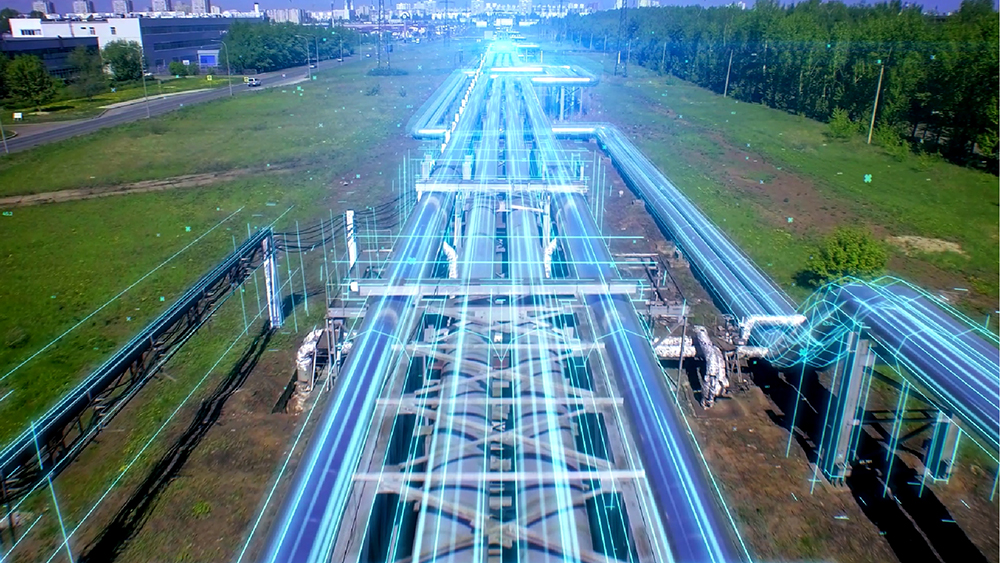5G is not just another new generation of communication. It is a veritable revolution in how mobile networks are designed and used. A few years ago, 4G networks overcame the connectivity and speed issues encountered in previous generations (2G, 3G), and accelerated person-to-person communication. 5G technology is not just another small step along this road; instead, it opens up radically new business opportunities that were not previously possible.
Chema Nebot, Idrica’s Business Development Director, details in this article the trends in 5G for 2022.
Until now, the same physical infrastructure has had to serve a wide variety of use cases, although these have very different requirements. However, the ultra-flexibility of 5G networks means that they can be sliced or configured in a variety of ways to cater to the needs of telecommunications infrastructure users.
We can compare this idea to highway infrastructures, which are characterized by their inflexibility. When we want to adapt them to external circumstances (an ambulance that needs to get through, closing or opening lanes depending on the volume of traffic, etc.), an external manager modifies them in an attempt to cater for these new uses, with varying degrees of success.
Conversely, if we apply the 5G concept, we would have smart infrastructures monitoring what is going on and taking swift action when needed. For example, they could open up a new lane, transfer lanes from one direction to another, light up the road or change to a more rugged road surface in the event of rain. Similarly, 5G will be able to create virtual corporate networks within the network itself, or respond to use cases with different bandwidth requirements, response speed and number of connected devices, among other functionalities.
This is how 5G can help us to build different use cases on its networks. The intelligence of the network makes it suitable for services that require high bandwidth and good coverage (enhanced Mobile Broadband – eMBB), low latency and very high reliability (Ultra Reliable Low Latency Communications – URLLC), as well as for securely connecting a large number of devices (Massive Internet of Things – MIoT).
5G-NR’s evolution across the world
The world’s major powers, such as China, the United States and Korea, have been vying to lead the development of 5G since 2019, and are adopting different strategies to push forward with the implementation of the most disruptive use cases.
So far, commercial deployments have been based on the Non-Standalone version, which is more limited in terms of its benefits. However, there is huge interest in moving forward, so during 2022, we expect to see the first Standalone deployments. In addition, some countries are already rolling out private networks in industrial environments and reserving part of the spectrum for their businesses, and we are even starting to see the first smart factory projects in Europe, with processes managed through 5G.
After completing the pilot testing phase and current partial deployments, the forecast is that in a couple of years’ time, 5G coverage will reach similar levels to those of current 4G networks. By that time, we will have moved to the commercial model, and it is reasonable to expect the water industry to take part in this change.
Some hurdles must first be overcome for this to happen, such as the limited availability of coverage and radio spectrum for industry, the global shortage of chips and the high cost of IoT devices. Full 5G coverage is expected to be reached by 2025, thanks in part to the support of governments, who see this technology as an economic driver capable of creating new jobs.
Innovative use cases in the water industry
The innovation brought by 5G comprises both the technology’s capabilities and the new use cases that it will enable. Although its full potential is still being explored in several pilot projects, there are a number of innovations that are worth taking into account.
One of the most important is the connection of millions of devices per km2, thanks to MIoT (Massive Internet of Things). 5G will ensure the coexistence of smart meters with the digital transformation of other devices, which is key in a world where there will soon be 26 billion devices connected.
For sensors to be compatible with economic and environmental sustainability, their useful life must be extended. 5G can reduce battery consumption by up to 50% compared to current levels. This technology also ensures that the digital transformation of infrastructures is secure, thanks to improved security protocols to protect against cyber-attacks and the ubiquity of the network, i.e. uninterrupted coverage.
In addition, 5G’s network slicing is essential for the management of critical infrastructures. The main change is that the network will adapt to the needs of businesses, and not the other way around, thanks to the definition of virtually independent networks with guaranteed quality of service.
These slices will enable remote control in real-time. The autonomous operation of plants, the driving of robots and the piloting of drones to inspect and monitor critical infrastructures, are just some of the examples that will become commonplace. Ultra-low latency will enable machines to inspect dangerous or difficult-to-access areas, such as sewers, and improve predictive asset maintenance. In addition, the farming industry is exploring the use of autonomous tractors for sowing and harvesting.
Another of the main practical applications also involves avoiding unnecessary travel and facilitating access to difficult spaces: remote assistance will speed up access to specialized knowledge to enhance incident resolution in the water industry.
2022: the water management revolution
Global water utilities are transforming their processes as a means to achieve greater water and energy efficiency. This journey includes leveraging the value of the data obtained from sensors, and doing so securely, in order to make better decisions.
Thanks to its low latency and its ability to connect millions of devices, 5G will become a key ally for these utilities. Moreover, against a background of increased transparency, this technology will help to liberate and democratize data, making it more accessible. The 21st Century citizen not only wants to know how much water they have consumed, but also how much is left in the reservoirs, or the quality of the water they are using, in real-time. 5G can provide the answer to these questions.
These citizen demands, and others related to environmental sustainability, are also shared by the government and are on the roadmap of water utilities. Consequently, 5G, as an enabler of innovative use cases, will receive firm support for its deployment and adoption. In the coming year, the water industry has a unique opportunity to further transform the management of its most precious resource through the advantages brought by 5G. The range of available technologies will benefit all water utilities, regardless of their degree of digital transformation.
Idrica’s Water Technology Trends 2022 report provides a comprehensive list of trends for the industry, including this article on how 5G can help to manage water service infrastructure.
Read more Idrica Articles and News on H2O Global News. Do you have an article or video that you would like to share? Submit your article here or keep up with the latest news from the water industry and wastewater industry by subscribing to our weekly newsletter







